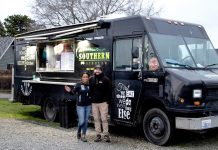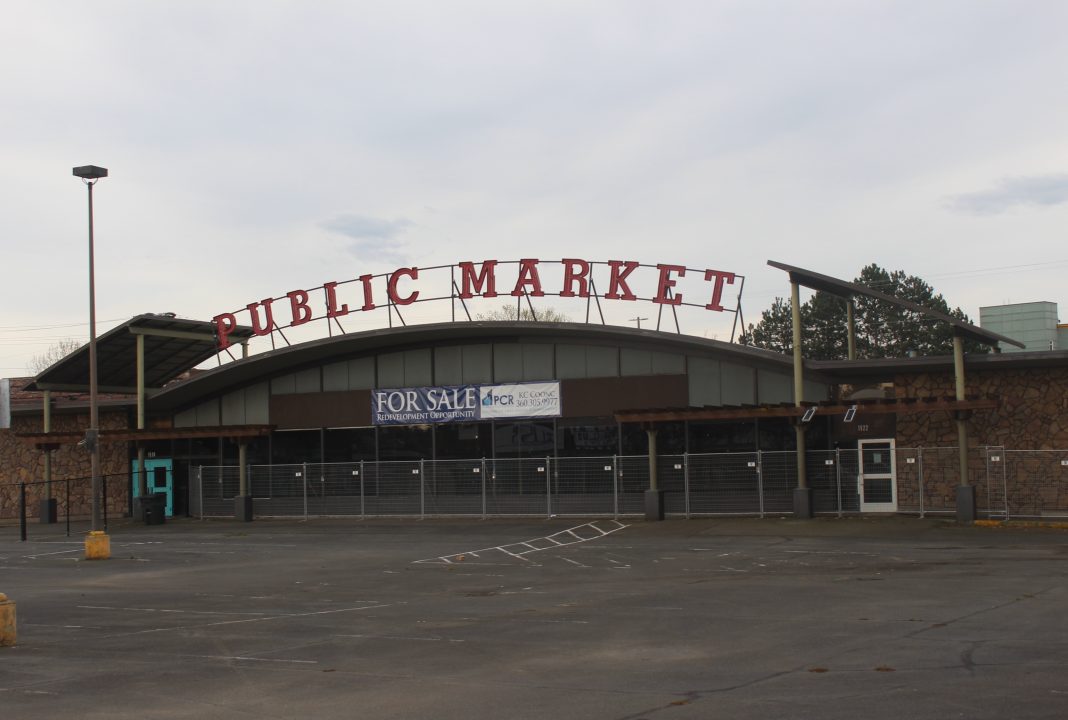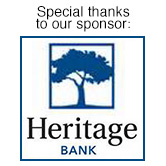In downtown Bellingham, the corner of Cornwall and Magnolia offers an interesting site: a commercial building with historic photos and captions covering its windows. This recent project by the City of Bellingham, Downtown Bellingham Partnership, and partners showcases the history of a landmark once called Bellingham Public Market.
As a nearby historical sign explains, “Bellingham Public Market had everything under one roof!” This site first allowed vendors to sell their wares along the streetcar lines long before the farmers’ markets and grocery stores that we have today.
The historical marker quotes The Bellingham Herald in 1925: “It is not too much to say that the Bellingham Public Market directly encouraged the building of a new business center.” Bellingham’s commercial district not only grew around its original public market but has expanded with today’s efforts to create another.
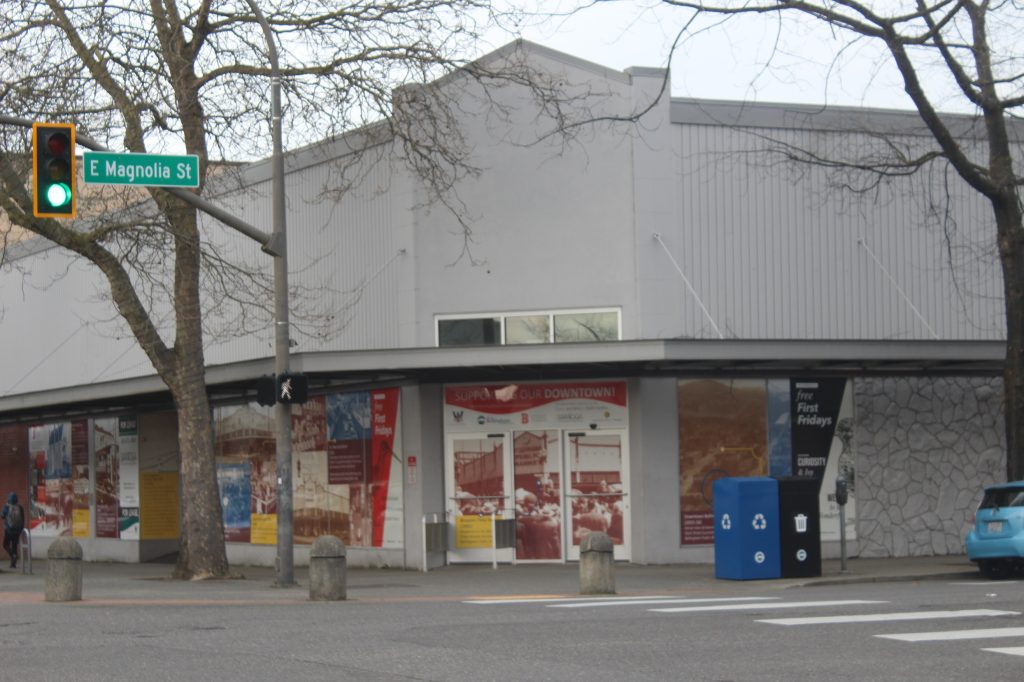
“Where the Producer Meets the Consumer”
Bellingham Public Market began in 1909 with seasonal stalls that drew farmers from as far as the San Juan Islands. The Commercial-style building at 1400 Cornwall Avenue was built in 1916 to expand the operation.
The building started with 23 vendors at 15 cents per stall. Advertisements called Bellingham Public Market “Where the Producer Meets the Consumer,” today’s signage says, and promised, “savings for the housewife by eliminating the middleman’s profits.” Open every day of the week, the building saw “over 10,000 people on Saturdays alone.” Business blocks sprang up around the market. It continued even after a 1933 fire gutted the building, requiring renovations.
As the present-day sign states, “businesses included grocers, soda fountain, coffee vendors, meat and fish markets, delicatessen and lunch counter, flower shop, dairy, shoe repair, beauty parlor and barber shop.” Visitors could take the streetcar and see the overhead bay doors lifted upward to reveal the riches inside.
Bellingham Public Market closed in 1957, a time when the transition from Pacific Highway 99 to Interstate 5 slowed downtown traffic to a crawl. Parking meters were installed in 1948, and competition from supermarkets spelled its undoing. The building then became a Rite Aid until recent years, when the new historical signage has beautified the building as it awaits new use.
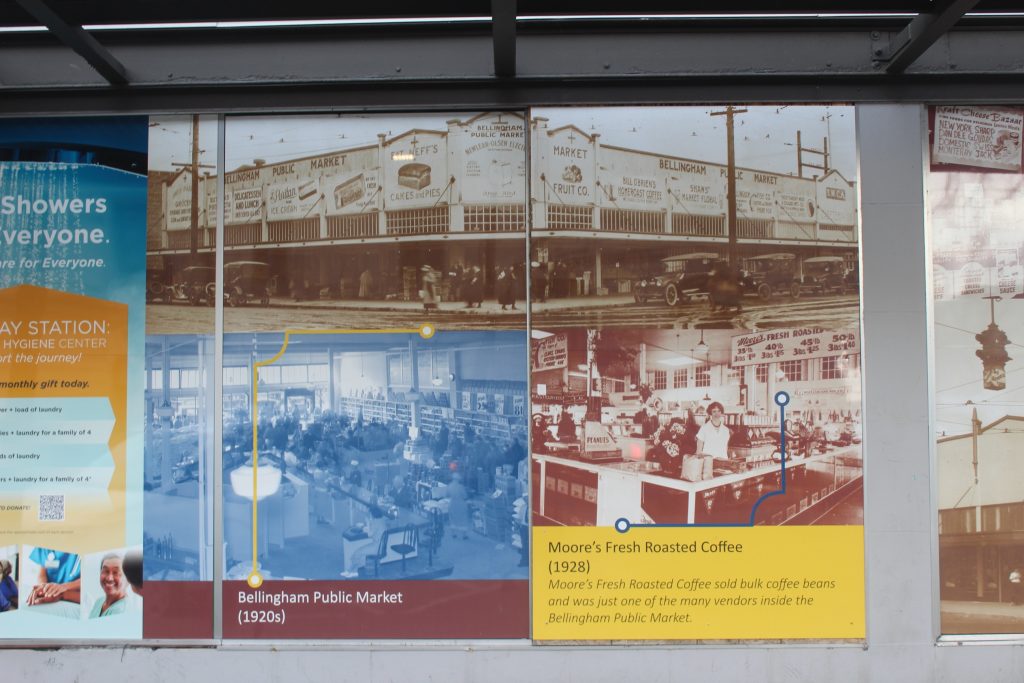
The Next “Public Market”
Confusingly, the name “Public Market” might make locals think of another building at 1530 Cornwall Avenue, with its sign styled after Seattle’s famous landmark at Pike Place Market. This building started in the shadow of the commercial district and briefly carried on the dream of a public market, but with an uncertain future.
The site had a Safeway grocery, one of the original Bellingham Public Market’s competitors, starting in 1942. The building itself began construction in 1963 and served as a Safeway until the 1980s.
The building cycled through various uses until it became Tube Time, a favorite play place of 90s and 2000s children in Bellingham. It included tubes, ball pits, and slides, plus party rooms, pizza, and an arcade. As one of Bellingham’s nostalgic lost landmarks, many of us mention it to other locals as an “if you know, you know.”
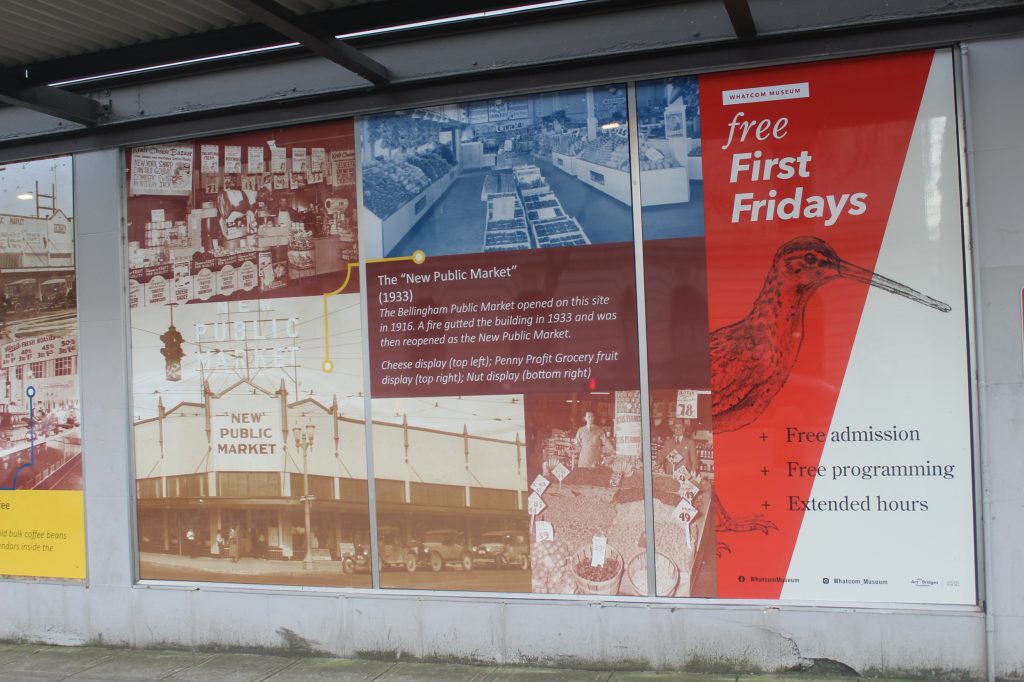
This other “Public Market” building best realized its predecessor’s promise with Terra Organica, the organic grocery store operating there from 2005 to 2018. They first installed the Pike Place-style sign and shared space with other tenants. Film Is Truth operated at the building with popular support until it closed in 2022 and became the digital collection owned by Pickford Film Center.
The building and parking lot saw its most recent use as the “Base Camp” homeless shelter for Lighthouse Mission during the COVID-19 pandemic. It replaced Bellingham High School as the temporary shelter, offering shelter, meals, and services to over 600 unhoused people for four years before the permanent shelter’s construction.
As of 2025, the building awaits new life as a once-great hub of downtown activity.

Depot Market Square
In terms of vendor space and services, Bellingham Farmers Market is the true successor to Bellingham Public Market. Starting with Western Washington University students’ efforts in the 1970s, it became official in 1993 and gained a home at Depot Market Square in 2006.
Depot Market Square uses the site of the Bellingham Bay and British Columbia Railroad’s 1892 train depot. The open-air building’s structure uses steel from a 1937 Skagit Valley bridge that was demolished in 2004. In addition to the Saturday market with over 100 vendors, Depot Market Square also hosts weddings, Antique Road Shows, Bellingham Pride, and other events.
From the original market on the streetcar line to the supermarket reached by automobile to the new farmers’ market at the old train depot site, these landmarks span Bellingham’s transportation history. They have shaped and are shaped by the exchange of commerce, so the green markets grow on the old bones of industry.





















